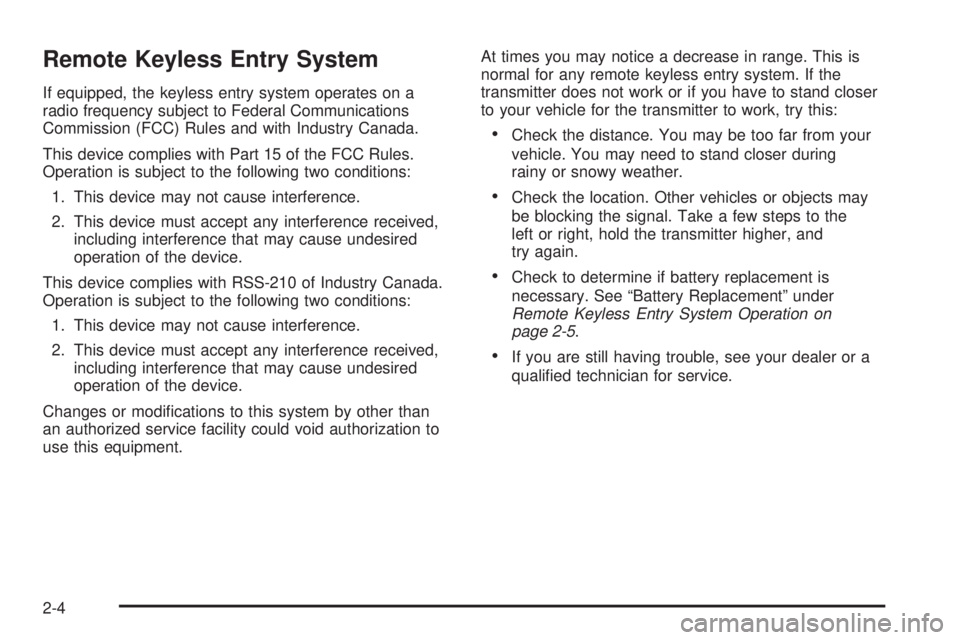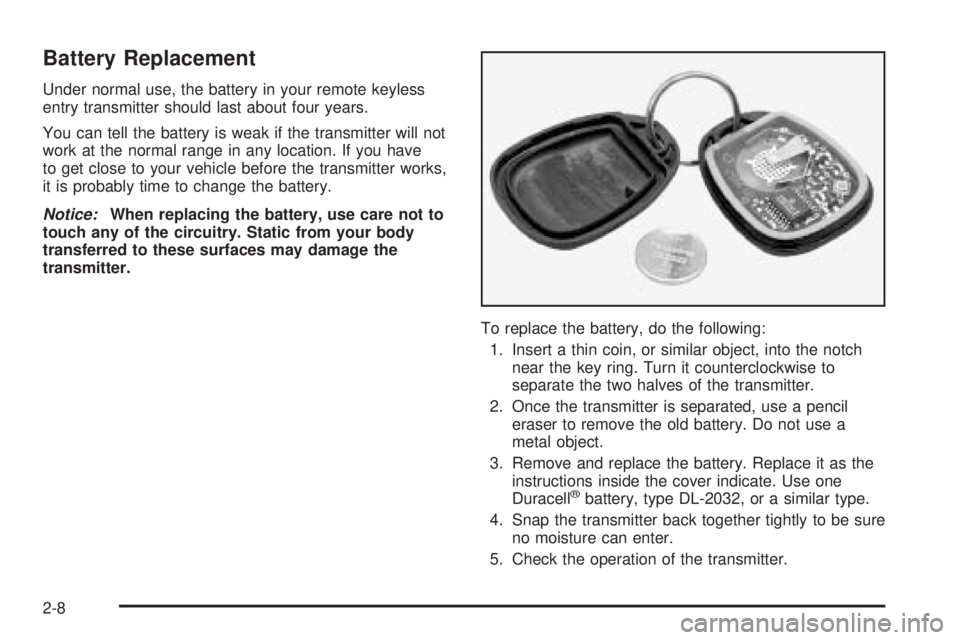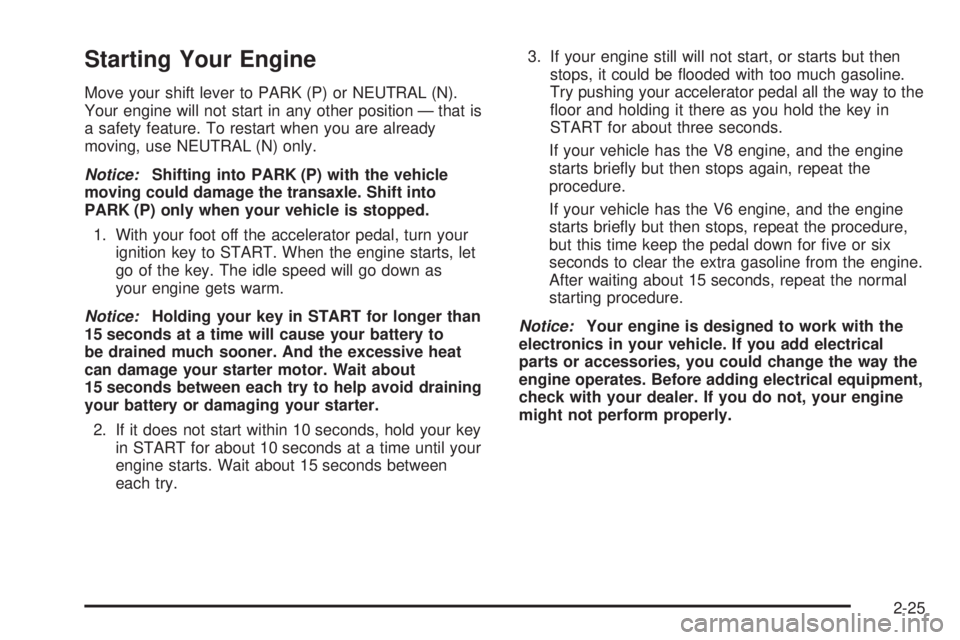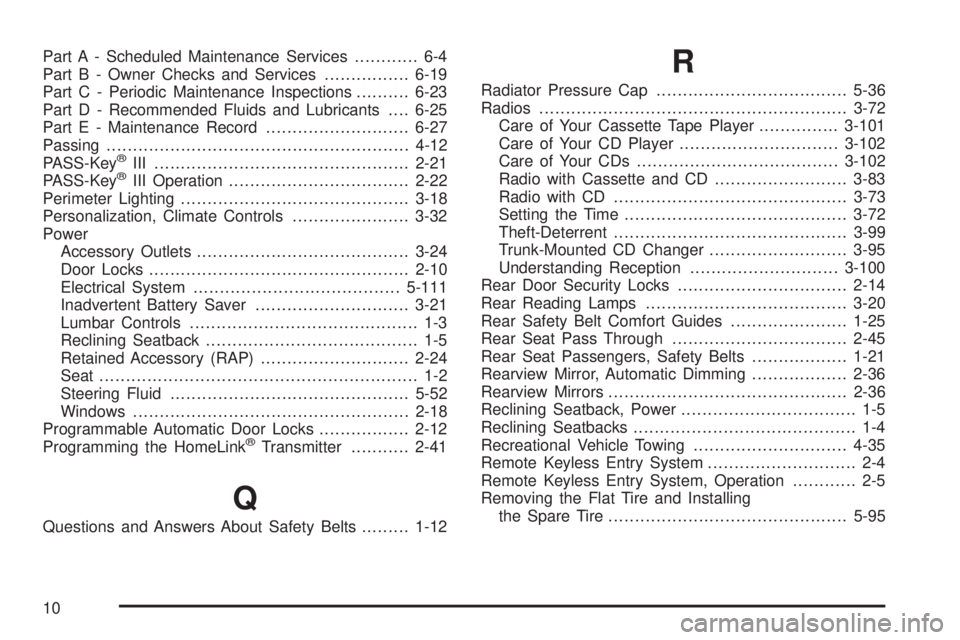2005 PONTIAC BONNEVILLE change key battery
[x] Cancel search: change key batteryPage 68 of 438

Remote Keyless Entry System
If equipped, the keyless entry system operates on a
radio frequency subject to Federal Communications
Commission (FCC) Rules and with Industry Canada.
This device complies with Part 15 of the FCC Rules.
Operation is subject to the following two conditions:
1. This device may not cause interference.
2. This device must accept any interference received,
including interference that may cause undesired
operation of the device.
This device complies with RSS-210 of Industry Canada.
Operation is subject to the following two conditions:
1. This device may not cause interference.
2. This device must accept any interference received,
including interference that may cause undesired
operation of the device.
Changes or modi�cations to this system by other than
an authorized service facility could void authorization to
use this equipment.At times you may notice a decrease in range. This is
normal for any remote keyless entry system. If the
transmitter does not work or if you have to stand closer
to your vehicle for the transmitter to work, try this:
Check the distance. You may be too far from your
vehicle. You may need to stand closer during
rainy or snowy weather.
Check the location. Other vehicles or objects may
be blocking the signal. Take a few steps to the
left or right, hold the transmitter higher, and
try again.
Check to determine if battery replacement is
necessary. See “Battery Replacement” under
Remote Keyless Entry System Operation on
page 2-5.
If you are still having trouble, see your dealer or a
quali�ed technician for service.
2-4
Page 72 of 438

Battery Replacement
Under normal use, the battery in your remote keyless
entry transmitter should last about four years.
You can tell the battery is weak if the transmitter will not
work at the normal range in any location. If you have
to get close to your vehicle before the transmitter works,
it is probably time to change the battery.
Notice:When replacing the battery, use care not to
touch any of the circuitry. Static from your body
transferred to these surfaces may damage the
transmitter.
To replace the battery, do the following:
1. Insert a thin coin, or similar object, into the notch
near the key ring. Turn it counterclockwise to
separate the two halves of the transmitter.
2. Once the transmitter is separated, use a pencil
eraser to remove the old battery. Do not use a
metal object.
3. Remove and replace the battery. Replace it as the
instructions inside the cover indicate. Use one
Duracell
®battery, type DL-2032, or a similar type.
4. Snap the transmitter back together tightly to be sure
no moisture can enter.
5. Check the operation of the transmitter.
2-8
Page 89 of 438

Starting Your Engine
Move your shift lever to PARK (P) or NEUTRAL (N).
Your engine will not start in any other position — that is
a safety feature. To restart when you are already
moving, use NEUTRAL (N) only.
Notice:Shifting into PARK (P) with the vehicle
moving could damage the transaxle. Shift into
PARK (P) only when your vehicle is stopped.
1. With your foot off the accelerator pedal, turn your
ignition key to START. When the engine starts, let
go of the key. The idle speed will go down as
your engine gets warm.
Notice:Holding your key in START for longer than
15 seconds at a time will cause your battery to
be drained much sooner. And the excessive heat
can damage your starter motor. Wait about
15 seconds between each try to help avoid draining
your battery or damaging your starter.
2. If it does not start within 10 seconds, hold your key
in START for about 10 seconds at a time until your
engine starts. Wait about 15 seconds between
each try.3. If your engine still will not start, or starts but then
stops, it could be �ooded with too much gasoline.
Try pushing your accelerator pedal all the way to the
�oor and holding it there as you hold the key in
START for about three seconds.
If your vehicle has the V8 engine, and the engine
starts brie�y but then stops again, repeat the
procedure.
If your vehicle has the V6 engine, and the engine
starts brie�y but then stops, repeat the procedure,
but this time keep the pedal down for �ve or six
seconds to clear the extra gasoline from the engine.
After waiting about 15 seconds, repeat the normal
starting procedure.
Notice:Your engine is designed to work with the
electronics in your vehicle. If you add electrical
parts or accessories, you could change the way the
engine operates. Before adding electrical equipment,
check with your dealer. If you do not, your engine
might not perform properly.
2-25
Page 434 of 438

Part A - Scheduled Maintenance Services............ 6-4
Part B - Owner Checks and Services................6-19
Part C - Periodic Maintenance Inspections..........6-23
Part D - Recommended Fluids and Lubricants....6-25
Part E - Maintenance Record...........................6-27
Passing.........................................................4-12
PASS-Key
®III ................................................2-21
PASS-Key®III Operation..................................2-22
Perimeter Lighting...........................................3-18
Personalization, Climate Controls......................3-32
Power
Accessory Outlets........................................3-24
Door Locks.................................................2-10
Electrical System.......................................5-111
Inadvertent Battery Saver.............................3-21
Lumbar Controls........................................... 1-3
Reclining Seatback........................................ 1-5
Retained Accessory (RAP)............................2-24
Seat............................................................ 1-2
Steering Fluid.............................................5-52
Windows....................................................2-18
Programmable Automatic Door Locks.................2-12
Programming the HomeLink
®Transmitter...........2-41
Q
Questions and Answers About Safety Belts.........1-12
R
Radiator Pressure Cap....................................5-36
Radios..........................................................3-72
Care of Your Cassette Tape Player...............3-101
Care of Your CD Player..............................3-102
Care of Your CDs......................................3-102
Radio with Cassette and CD.........................3-83
Radio with CD............................................3-73
Setting the Time..........................................3-72
Theft-Deterrent............................................3-99
Trunk-Mounted CD Changer..........................3-95
Understanding Reception............................3-100
Rear Door Security Locks................................2-14
Rear Reading Lamps......................................3-20
Rear Safety Belt Comfort Guides......................1-25
Rear Seat Pass Through.................................2-45
Rear Seat Passengers, Safety Belts..................1-21
Rearview Mirror, Automatic Dimming..................2-36
Rearview Mirrors.............................................2-36
Reclining Seatback, Power................................. 1-5
Reclining Seatbacks.......................................... 1-4
Recreational Vehicle Towing.............................4-35
Remote Keyless Entry System............................ 2-4
Remote Keyless Entry System, Operation............ 2-5
Removing the Flat Tire and Installing
the Spare Tire.............................................5-95
10